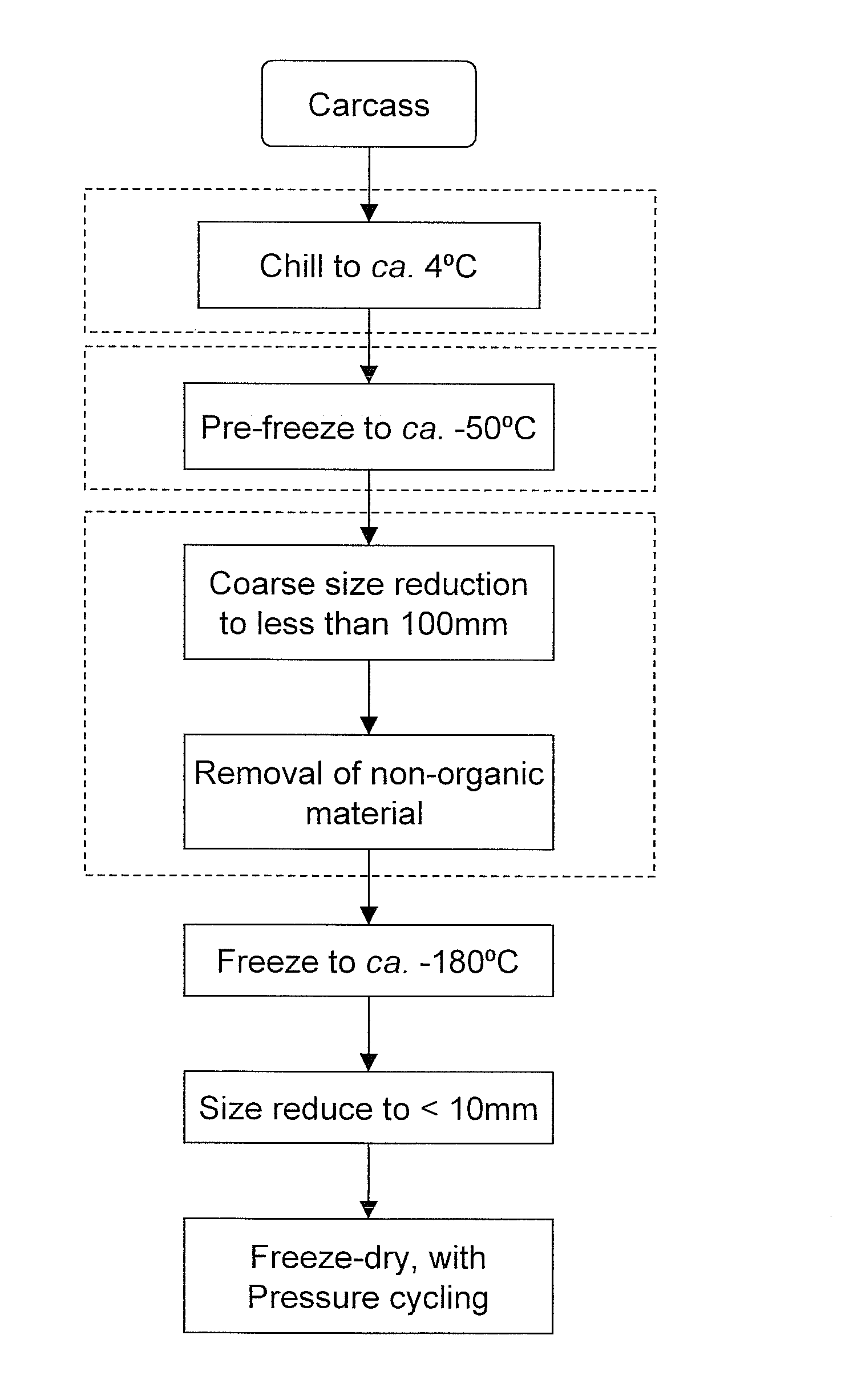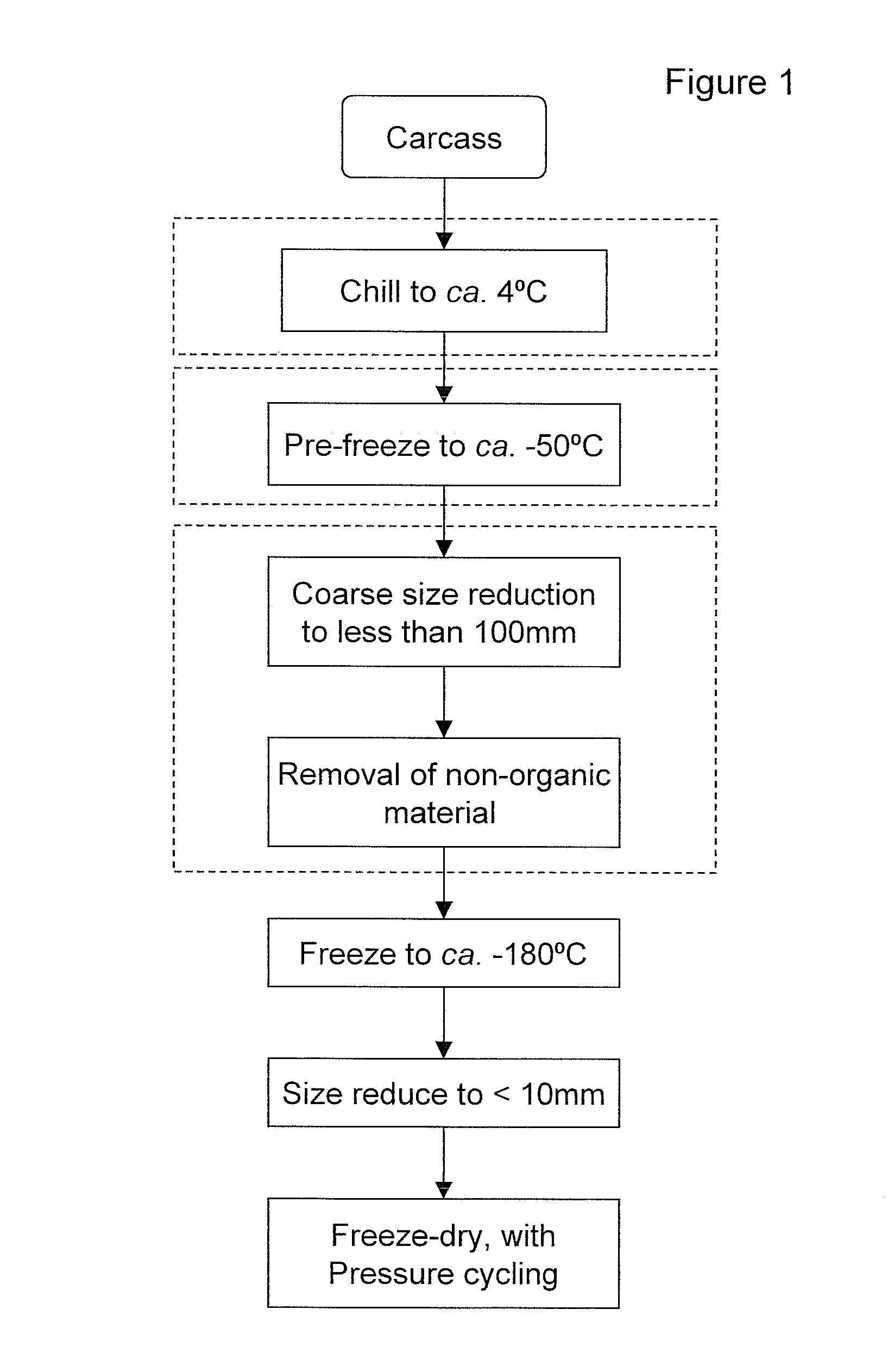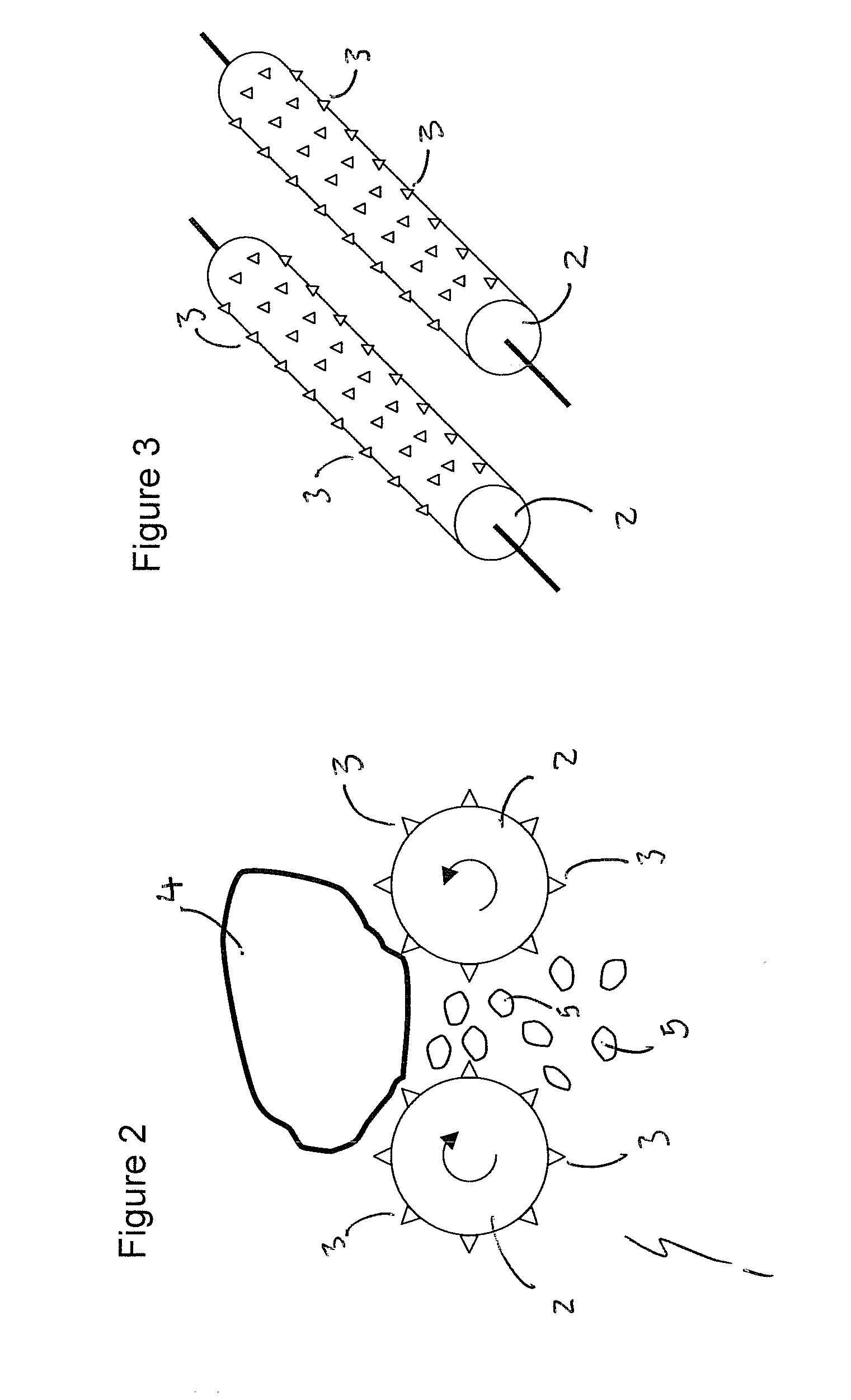Treatment of organic matter
a technology of organic matter and treatment, applied in the direction of drying solid materials, drying machines with progressive movements, drying machines, etc., can solve the problems of large volume of carbon dioxide in the atmosphere, damage to watercourses especially from mass animal burial sites, and negative environmental consequences, so as to enhance the drying of remains, enhance the effect of microbial inactivation, and increase the killing of microbials
- Summary
- Abstract
- Description
- Claims
- Application Information
AI Technical Summary
Benefits of technology
Problems solved by technology
Method used
Image
Examples
Embodiment Construction
[0028]FIG. 1 is a schematic flow diagram of a method for treating organic remains according to the present invention. Process stages contained within dotted outline boxes are optional. In a typical embodiment of the process, an animal carcass, or a body of a deceased person, would be chilled to approximately 4° C., to prevent further degradation and decomposition of the remains. At an appropriate time, the remains would be pre-frozen to approximately −50° C. and subjected to a size reduction process to produce fragments of approximately 50-100 mm in size. The inventors have found that pre-freezing the remains in this way assists in the size reduction process, and subsequent processing. Size reduction may be carried by the of a rotating blade assembly, and a particularly suitable apparatus is described below with reference to FIGS. 2 and 3. For the treatment of human remains, this coarse size reduction allows access to non-organic material contained with the body, such as artificial ...
PUM
 Login to View More
Login to View More Abstract
Description
Claims
Application Information
 Login to View More
Login to View More - R&D
- Intellectual Property
- Life Sciences
- Materials
- Tech Scout
- Unparalleled Data Quality
- Higher Quality Content
- 60% Fewer Hallucinations
Browse by: Latest US Patents, China's latest patents, Technical Efficacy Thesaurus, Application Domain, Technology Topic, Popular Technical Reports.
© 2025 PatSnap. All rights reserved.Legal|Privacy policy|Modern Slavery Act Transparency Statement|Sitemap|About US| Contact US: help@patsnap.com



